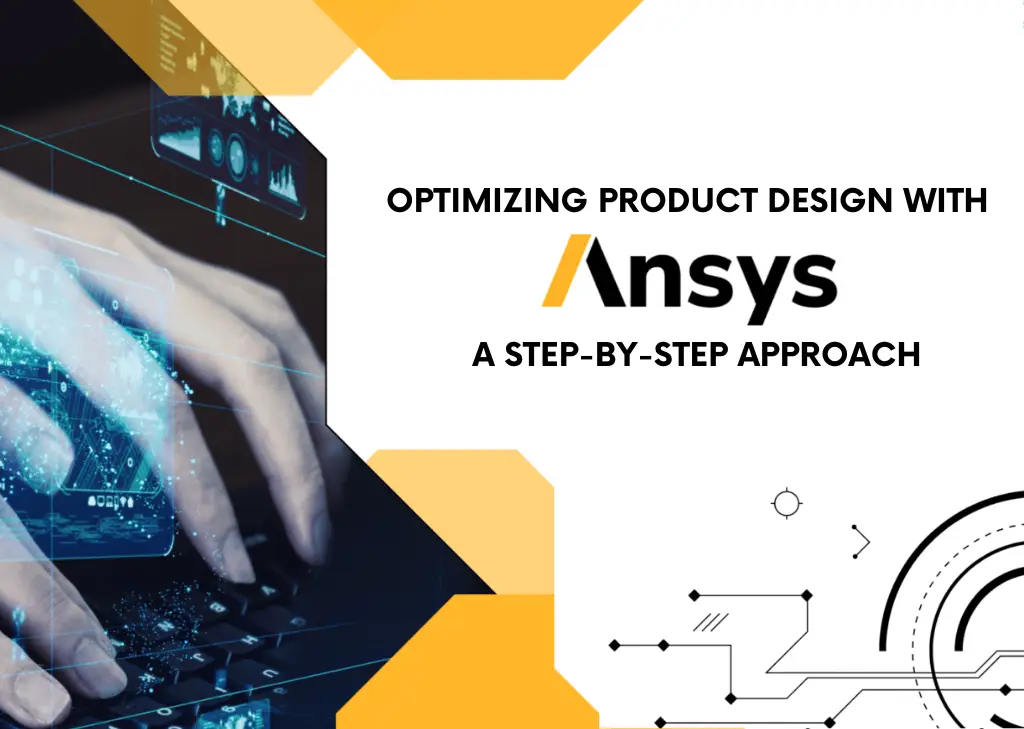Introduction:
In the competitive landscape of product development, achieving an optimal design is
paramount for success. ANSYS, a leading engineering simulation software, offers a powerful set of tools to
streamline the optimization process, ensuring that products meet performance criteria while minimizing costs and
time-to-market. In this blog, we will take a step-by-step approach to illustrate how to leverage ANSYS for
optimizing product design.
Step 1: Define Design Objectives and Constraints
Before diving into simulation, it’s crucial to clearly define the objectives and
constraints of your product design. Identify key performance metrics, such as structural integrity, thermal
efficiency, or fluid dynamics characteristics. Additionally, consider any cost, manufacturing, or regulatory
constraints that may impact the design process.
Step 2: Model Creation and Geometry Optimization
Use ANSYS’s intuitive interface to create a 3D model of your product. ANSYS provides
robust geometry creation tools that allow for detailed and accurate representations. Once the model is established,
leverage ANSYS’s geometry optimization features to refine and optimize the design for better performance.
Step 3: Material Selection and Property Assignment
Choose the appropriate materials for your product and assign material properties within
ANSYS. The software provides an extensive material library, allowing you to accurately simulate the behavior of
different materials under various conditions. This step is crucial for obtaining realistic and reliable simulation
results.
Step 4: Meshing for Simulation
Create a mesh to discretize the geometry, allowing ANSYS to perform simulations on a
finite element level. Proper meshing is essential for obtaining accurate results. ANSYS offers automated meshing
tools that simplify this process, ensuring that simulations are both efficient and precise.
Step 5: Define Boundary Conditions and Loads
Set up boundary conditions and apply loads to simulate the real-world operating
conditions of your product. Whether it’s structural forces, thermal loads, or fluid pressures, ANSYS allows you to
define these conditions with precision. This step is crucial for accurately assessing how the product will perform
under various scenarios.
Step 6: Run Simulations
Initiate simulations using ANSYS’s solver to analyze the behavior of your product under
the defined conditions. ANSYS’s robust solvers employ advanced algorithms to provide accurate and detailed results
across a range of physics simulations, including structural, thermal, fluid dynamics, and electromagnetic analyses.
Step 7: Evaluate and Analyze Results
Once simulations are complete, use ANSYS’s post-processing tools to evaluate and analyze
the results. Visualize the data in various formats, including contour plots, graphs, and animations. This step
allows you to gain insights into how design changes impact performance and make informed decisions for optimization.
Step 8: Iterative Design Optimization
Based on the analysis of simulation results, make informed design changes to optimize
performance while meeting constraints. ANSYS’s parametric optimization capabilities allow for automated iteration of
design variations, helping engineers quickly converge towards an optimal solution.
Step 9: Validate and Verify
Validate the optimized design by comparing simulation results with real-world testing or
historical data. ANSYS provides a platform for robust validation and verification processes, ensuring that the
virtual prototype aligns with physical reality.
Step 10: Fine-Tuning and Finalization
Refine the design based on validation results and conduct any additional simulations as
needed. Fine-tune the product design to achieve the desired balance of performance, cost-effectiveness, and
manufacturability. With ANSYS, this iterative optimization process can be executed efficiently.
Conclusion:
By following this step-by-step approach with ANSYS, engineers can navigate the
complexities of product design optimization with confidence. From defining objectives to fine-tuning the final
design, ANSYS provides a comprehensive suite of tools that streamline the optimization journey, empowering product
development teams to deliver innovative and high-performance solutions to the market.

